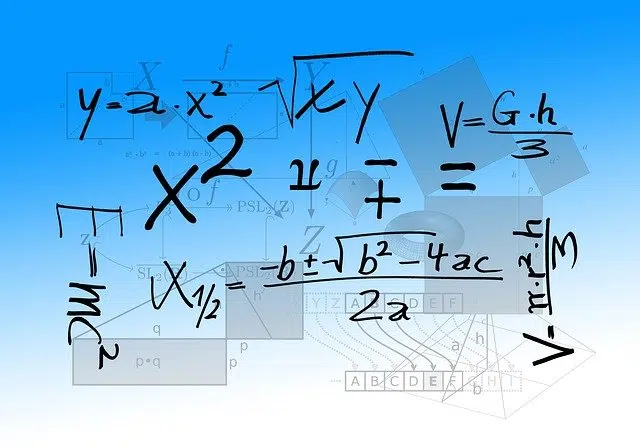
Factoring involves decomposing an algebraic expression into factors to enable its presentation in a simpler way.
Factoring is a term used in the field of mathematics to refer to the act and result of factoring . This verb ( factorize ), meanwhile, refers to the decomposition of a polynomial into the product of other polynomials of lower degree or to the expression of an integer based on the product of its divisions.
It can be said that factorization allows an algebraic expression to be decomposed into factors to present it in a simpler way . It should be noted that the factors are expressions that are subjected to multiplication to obtain a product.
Factoring integers
Take the case of factoring integers . This process involves the decomposition of compound numbers into divisors that, when multiplied, make it possible to obtain the number in question.
According to the unique factorization theorem , also known as the fundamental theorem of arithmetic , a positive integer can only be decomposed into prime numbers in one way. A prime number , on the other hand, is a natural number that is greater than 1 and that only has two natural divisors: 1 and itself .
Let's look at the case of number 81 :
81/3
27/3
9/3
3/3
1
The factorization of 81 into prime numbers, thus, is 3 to the power of 4 (3 x 3 x 3 x 3).
Returning to the definition of the fundamental theorem of arithmetic, we must understand that it applies to all integers greater than 1, that is, positive. He points out that in this group we can only find prime numbers or unique products of prime numbers, meaning that this second possibility is fixed for each case. Since in the case of multiplication we have the commutative property, according to which the order of the factors does not affect the product, we can alter the sequence of the prime numbers resulting from factorization.

Factoring polynomials is carried out using coefficients.
Operation with polynomials
One can also talk about factoring polynomials . In this case, polynomials are factored by appealing to coefficients in a certain field or domain. These calculations are usually carried out with computer algebra systems. Matrix factorization , finally, refers to the decomposition of a matrix as the product of at least two matrices.
Let's look at some of the concepts expressed in the previous paragraph more carefully. A field , in this context, is an algebraic system in which addition and multiplication operations can be carried out respecting the commutative, distributive and associative properties of the second with respect to the first. It also admits the additive inverse , the multiplicative inverse and two neutral elements that open the doors to subtraction and division (the latter cannot be done by zero).
With respect to the computer algebra system , for which this type of factorization represents one of the most important tools, it is a program executed by a processor that allows calculations to be made symbolically. It differs from a traditional calculator in that it allows formulas and equations to be solved symbolically instead of numerically. This means that you can interpret variables as such instead of just accepting numbers.
Historical development of polynomial factorization
Factoring polynomials has an extensive history. It takes us back to the year 1793, when the scientist Hermann Schubert made the first description of an algorithm designed for this purpose. Almost a century later, in 1882, Leopold Kronecker continued to work on Schubert's proposal and expanded it to include multivariate and coefficient polynomials.
Despite all this, the greatest volume of discoveries and theories around this type of factorization emerged in the second half of the 20th century. Broadly speaking, we can mention two groups of methods to calculate polynomial factorization: the classic ones (obtaining linear factors and the Kronecker method); the modern ones (the LLL algorithm and the Trager method).
